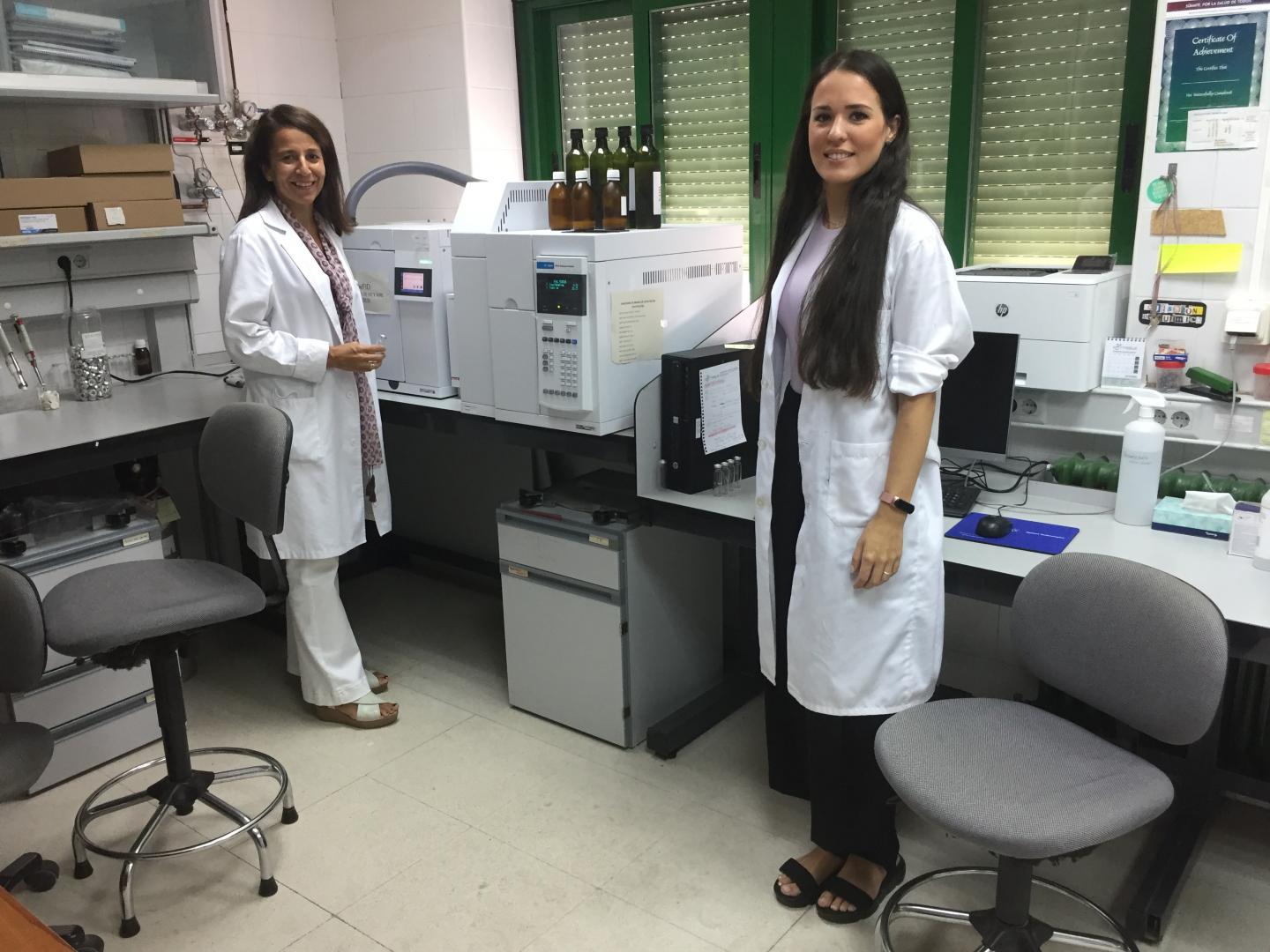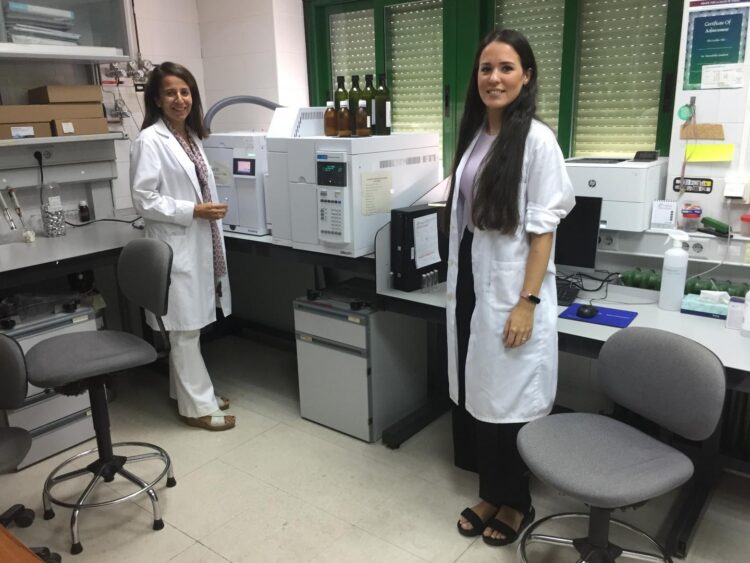
Credit: Universidad de Córdoba (Spain)
Classifying olive oils into the categories of extra virgin (EVOO), virgin (VOO) and lampante (LOO) is still quite a challenge to deal with since the official method includes physical-chemical and sensory analyses by means of a panel of tasters. These tasters need to be specialized, and on many occasions are not available, in addition to being expensive and slow. All of this has created the necessity to develop new analytical methods using affordable, reliable tools that are transferable to the industry.
The AGR-287 research group, led by Professor Lourdes Arce, was a pioneer in demonstrating the possibilities that Gas Chromatography along with Ion Mobility Spectrometry (GC-IMS) could provide in order to classify oils into three categories (EVOO, VOO and LOO). This methodology allows for analyzing two samples an hour. When a representative number of samples has been analyzed, the chemical information gathered is dealt with using statistical tools in order to create calibration equations that will allow for classification of samples of unknown oil into their respective categories in the future.
A crucial point in the validation of this method is the number of samples needed to calibrate the equipment. The research done has shown that, in order to obtain good results, it is not only necessary to analyze a representative number of samples but to also have samples of olive oil belonging to each of the three categories, from different varietals, from different seasons and tasted by at least two panels whose results coincide. Hence, these methods do not seek to substitute, but rather complement and support, the role of accredited tasting panels. In these research projects, the importance of building a bank of oil samples has been demonstrated, so that they can be reference standards that will be used to construct calibrated equations. These equations will establish the categories of analyzed oil samples.
The results obtained from this research have aroused interest among different businesses in the oil sector that are currently collaborating on carrying out transferring this research to the industry. What is more, using the knowledge ensuing from this research, a new instrument is being developed that will classify oils based on the use of IMS technology. This makes up one of the lines of Project Innolivar, whose aim is to increase competitiveness, international positioning, technological capacity and financial profitability of olive groves and their associated business sector.
Another research project being carried out by doctoral student Natividad Jurado, has revealed that the proper classification of oils requires taking the chemical compounds that each taster discerns into consideration as well. The proposed methodology is based on the extraction of certain compounds present in oil, for instance polyphenols, and then determining them using capillary electrophoresis (CE-UV) – a technique to separate different molecules – coupled with an ultraviolet detector. In a paper published in Talanta, the integrated use of both techniques (CE-UV and GC-IMS) was suggested in order to detect non-volatile compounds detected by the mouth, and also the volatile compounds detected by the nose. All the information obtained with both techniques is dealt with by statistical tools suitable for classifying an oil sample into the correct category. This fusion of data has been proven to be useful when classifying borderline samples that are at the interface of two groups (EVOO/VOO or VOO/LOO).
###
Natividad Jurado-Campos, Natalia Arroyo-Manzanares, Pilar Viñas, Lourdes Arce. “Quality authentication of virgin olive oils using orthogonal techniques and chemometrics based on individual and high-level data fusion information”, Talanta. https:/
Media Contact
Elena Lázaro
[email protected]
Original Source
https:/
Related Journal Article
http://dx.





